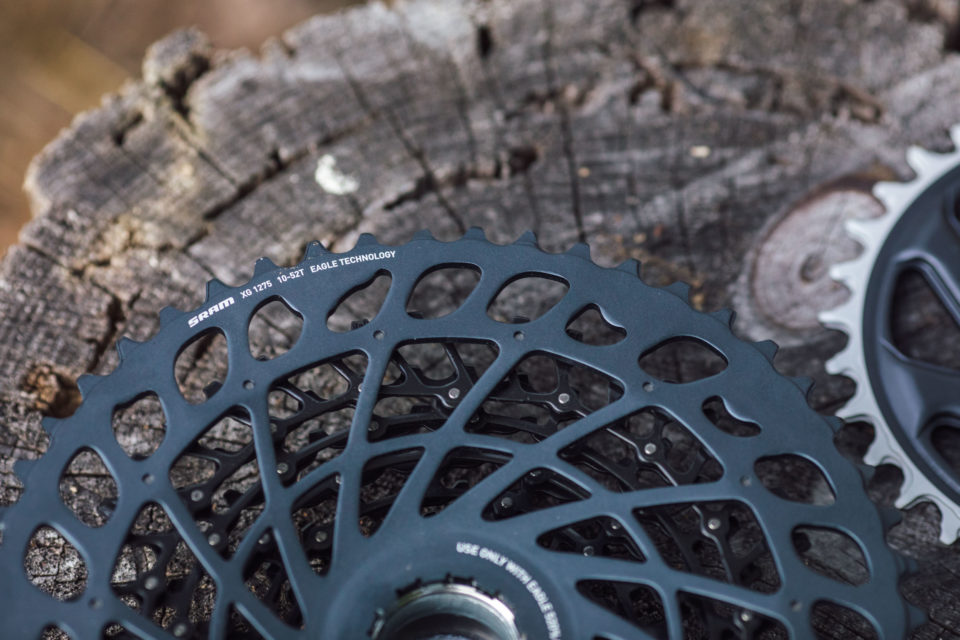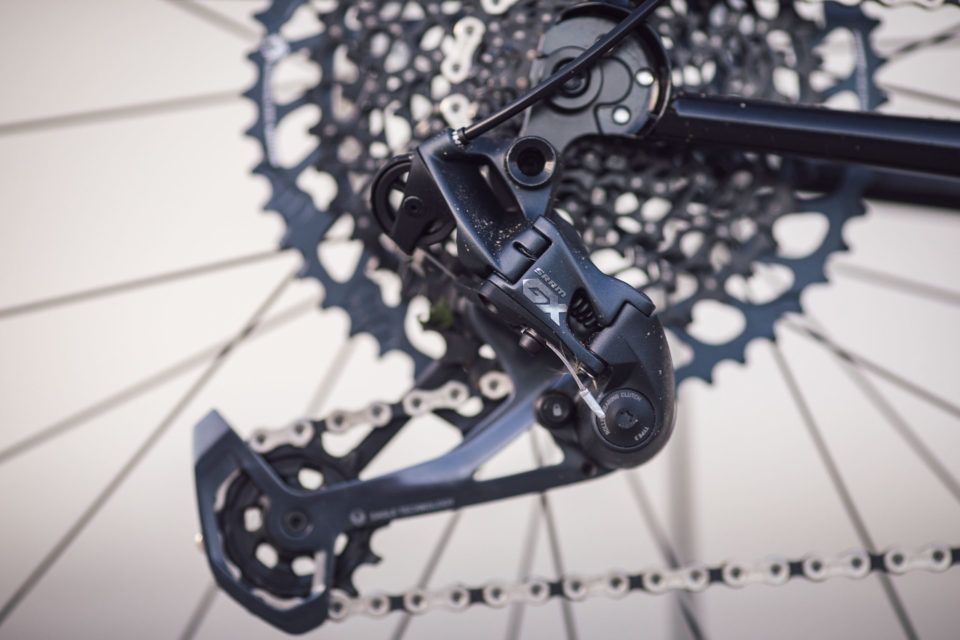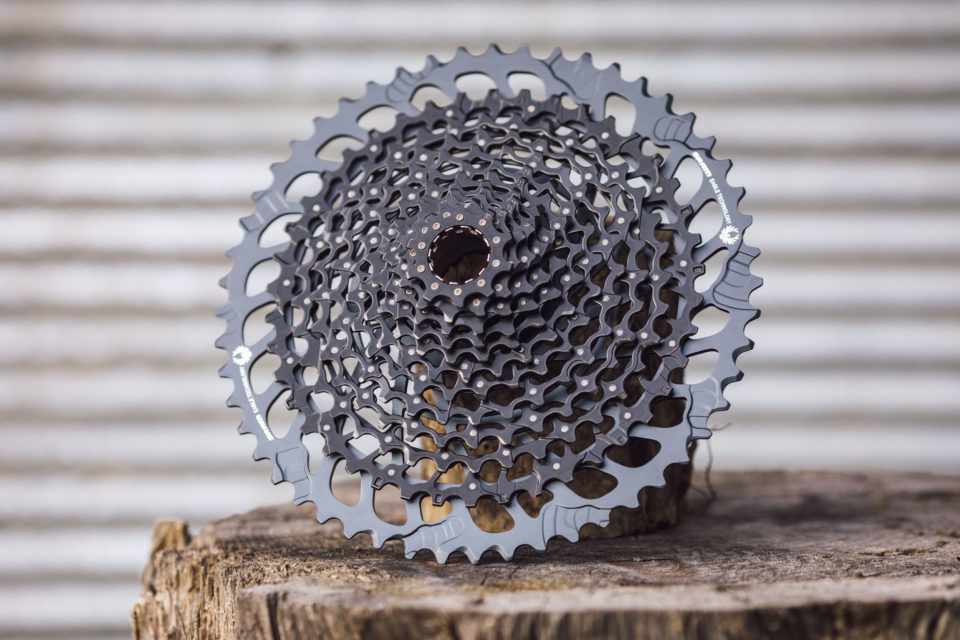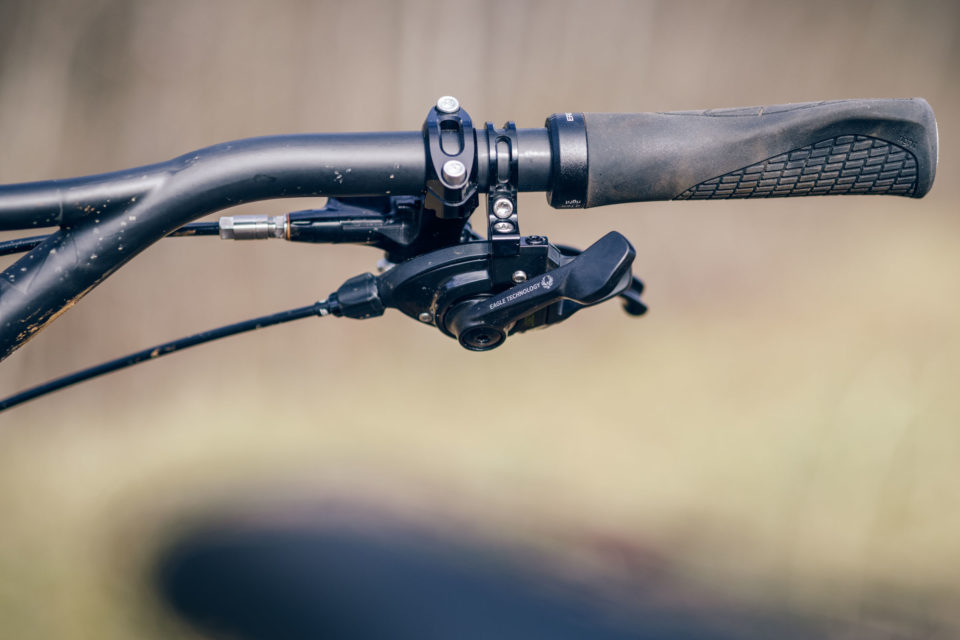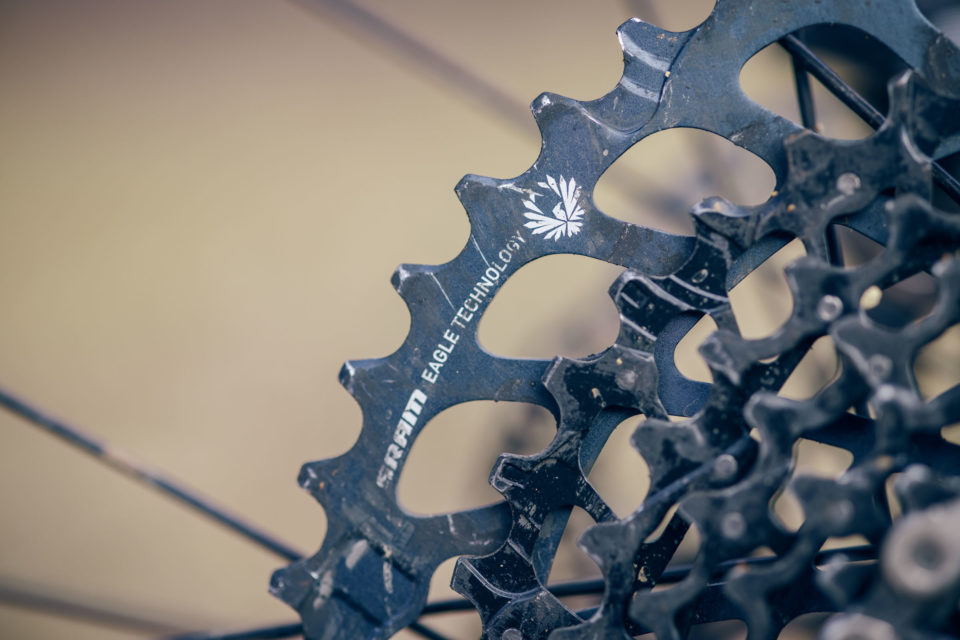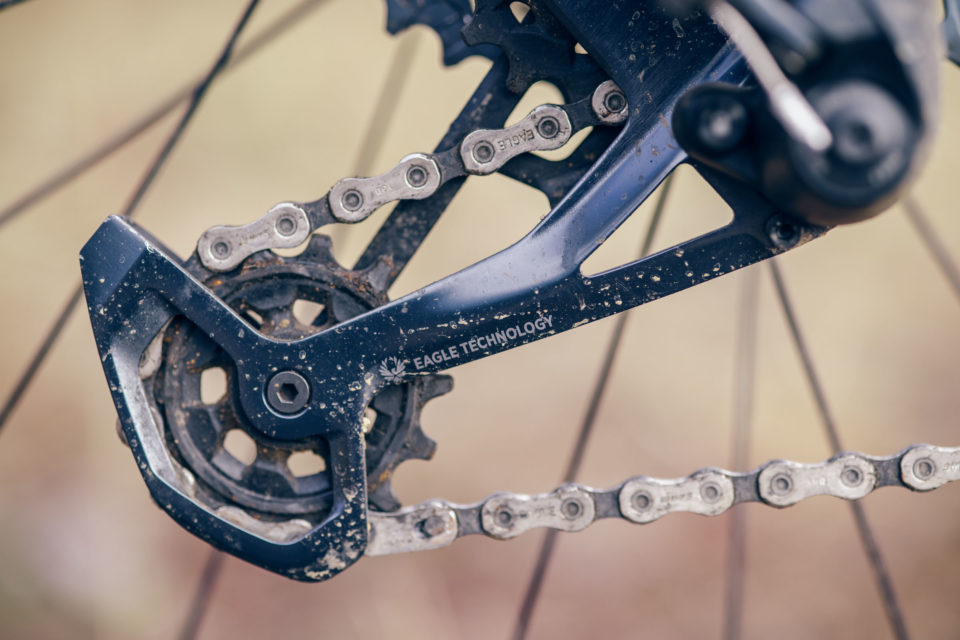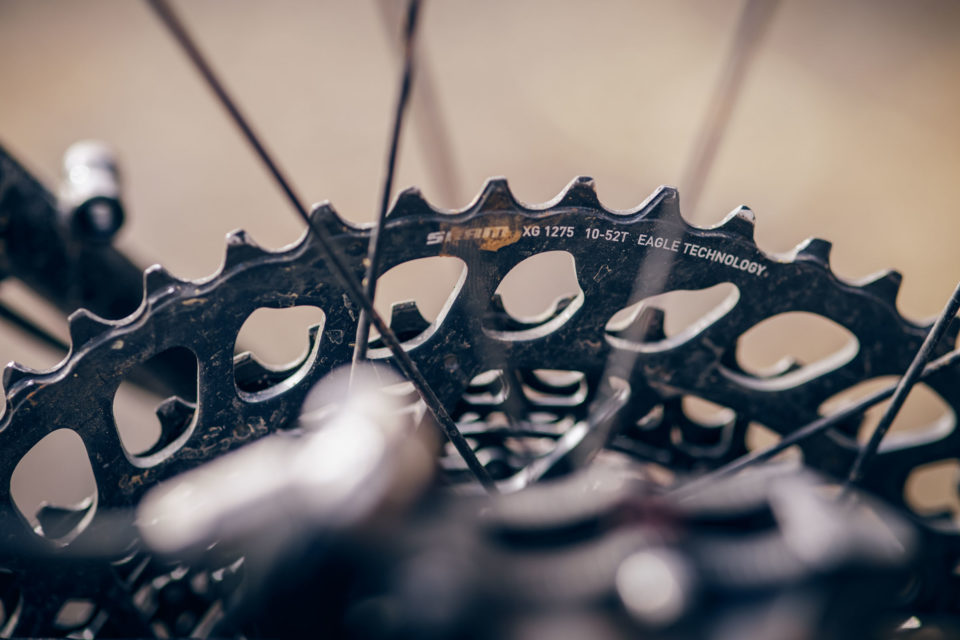SRAM Eagle GX 10-52T Review
Share This
After around 1,000 miles of use, Logan shares his thoughts on the latest SRAM Eagle GX 1×12 drivetrain, featuring the massive 10-52-tooth cassette. Read on for the review, complete with weights and a detailed side-by-side comparison with SRAM X01 and the Shimano SLX group…
Believe it or not, the trailblazing frisbee-sized SRAM Eagle 1×12 cassettes have been around for nearly five years now. Time flies, right? In the meantime, I’ve managed to ride pretty much every SRAM Eagle group that’s been released, from the budget SX group to the high-end AXS X01. And while the X01 stuff (both mechanical and wireless) is super nice, I keep coming back to the GX group for personal bike builds. Honestly, it comes down to price and principle for me, but it’s also proven to be a reliable drivetrain. As a matter of fact, we’ve put several thousand miles on the O.G. Eagle GX 1×12 drivetrain over the years. Virginia is still running the same derailleur, shifter, and cassette that’s seen nearly 1,000 miles in Armenia and the Republic of Georgia, close to 1,500 miles of trail riding all over western-NC, nearly 1,000 miles of overnighters and scouting trips up and down the Appalachians, and probably a few more trips that I’ve forgotten about. All in, I think it has close to 4,000 miles on it, and it’s still ticking (although a cassette replacement is right around the corner).
With that, I might just be ready to declare Eagle GX to be one of the most reliable and well-suited 1x bikepacking drivetrains on the market. Aside from the durability, there are several reasons to back that claim up, which I’ll discuss while talking about the new new, which is what this article is all about. Last summer, SRAM updated the Eagle GX group with a sleeker design and a 4% increase in range. I’ve put a little over 1,000 miles on this new group, so I feel like I’m in a place where I can provide some insight on this system and the massive 10-52T cassette.
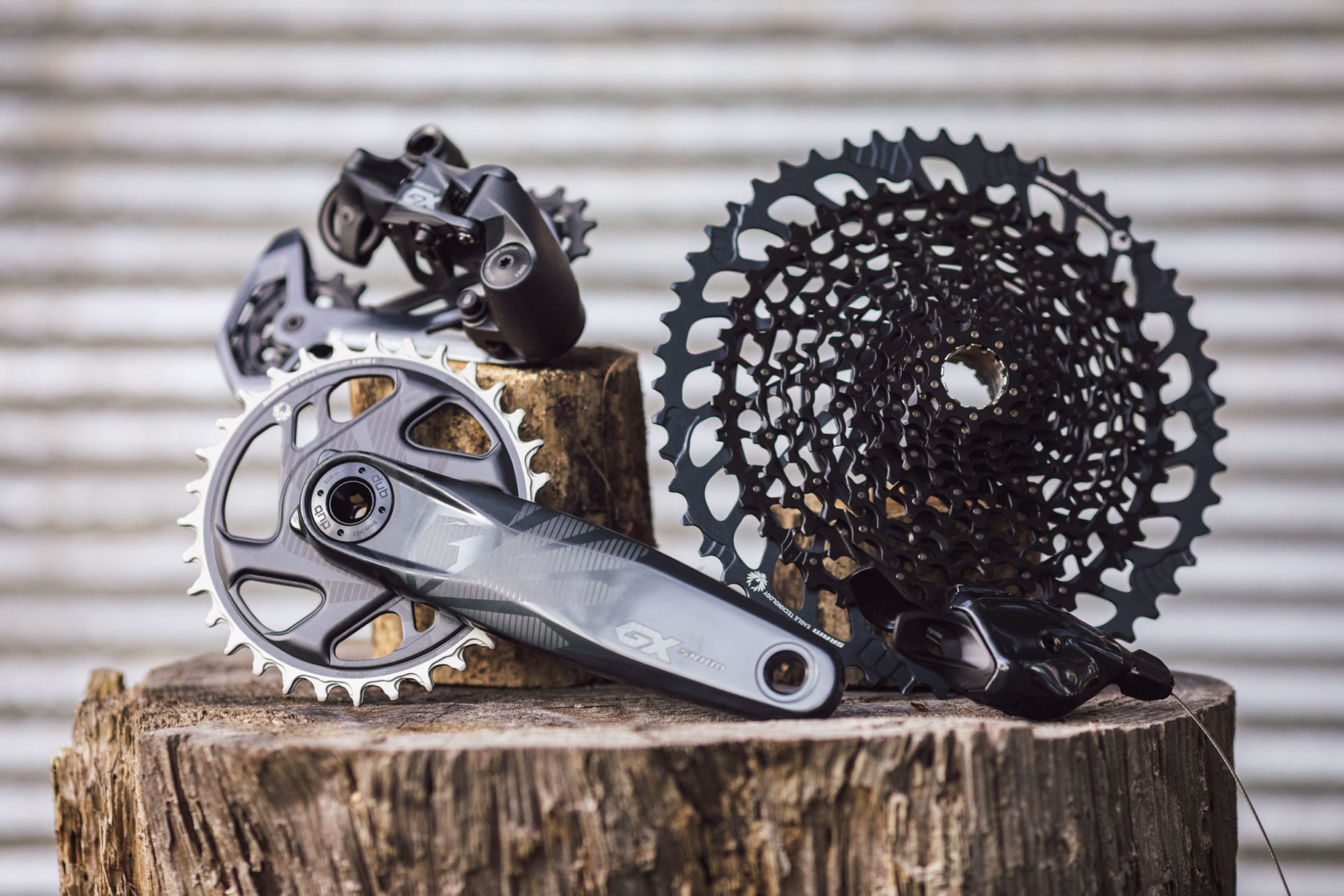
Value and Weight
Before I dig into that fun 52T cassette cog, let’s talk value for the entire group. The Eagle GX drivetrain isn’t the cheapest 1×12 drivetrain in SRAM’s range. The 10-52T cassette ($215), crankset ($135), derailleur ($125), shifter ($45), and chain ($33) combo will set you back about $545 (for the group price). The NX group is about $70 cheaper, but due to the fact that it has an 11-tooth cog on the high-end—for use on a standard HG hub driver—you loose a significant amount of range, and the derailleur clutch isn’t nearly as good, in my experience.
On the other side of the spectrum, the X01 drivetrain, which is one step up from GX, costs about $1,285. But it’s also significantly lighter—the group is about 273 grams less than GX.
| Group | GX | X01 |
|---|---|---|
| Derailleur | 300g | 286g |
| Shifter | 122g | 116g |
| Crankset (32T ring) | 635g | 462g |
| Cassette | 453g | 373g |
| Totals | 1510g | 1237g |

Though all of the main components are lighter and more expensive on X01, the biggest differentiator is the cassette. That said, the GX cassette is only 80 grams heavier, but costs 170 bucks less. That’s about $2 per gram, and in my opinion, is definitely not worth it. And considering the longevity of the GX system and its excellent performance, at $545, it’s an excellent value. I would even argue that it shifts almost as crisply as X01, too. But you also have to look at its closest competitor…
Eagle GX vs. Shimano SLX
Comparing it to SLX, Shimano’s parallel 1×12 group, GX is about $150 more, which is a significant difference. Most of the individual component prices are generally close until you get to the derailleur and cassette. The SLX 10-51T cassette is about $110 cheaper than the GX. However, the Microspline hub driver required for the Shimano cassette isn’t as ubiquitous as the XD driver used for GX (yet). Both the GX and SLX cassettes are made of 12 steel cogs, however, the SLX is a multi-piece made up of one 7-cog cluster and 5 separate cogs with spacers. Conversely, the GX cassette is a one-piece full pin steel design.
| Group | GX | SLX | GX | SLX |
|---|---|---|---|---|
| Derailleur | $125 | $79 | 300g | 309g |
| Shifter | $45 | $41 | 122g | 131g |
| Crankset (32T ring) | $135 | $139 | 635g | 630g |
| Cassette | $215 | $105 | 453g | 527g |
| Totals | $520 | $364 | 1510g | 1597g |
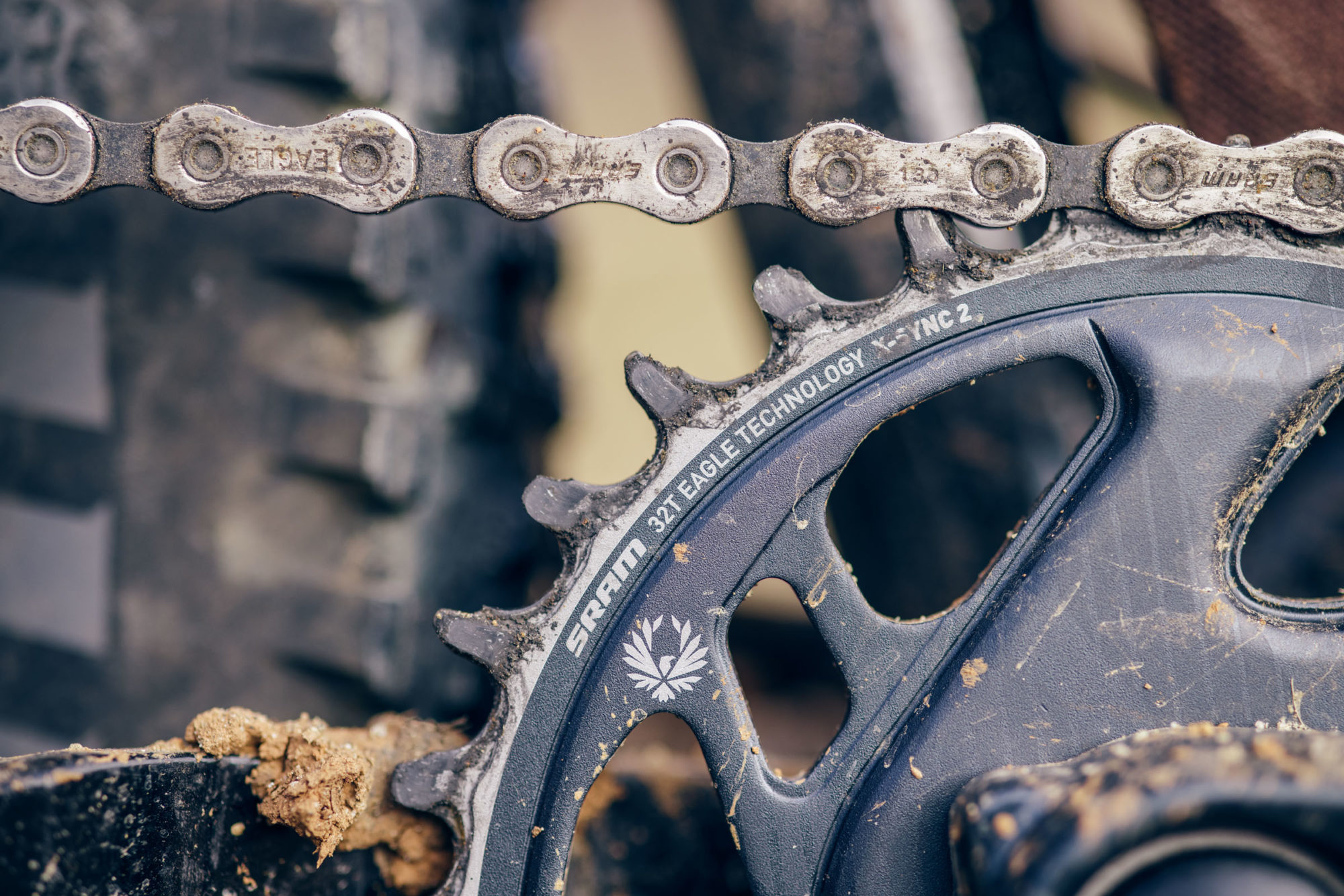
Range and Ratios
I’ve always found that a 32T chainring makes a great pairing with a 10T cassette cog for a high gear on a 29er mountain bike. It’s definitely not roadie-high, but certainly high enough to avoid too much spinning out while trail riding, mixed-terrain riding, or loaded bikepacking. However, on the low end, a 32T ring can sometimes fall a little short on the ultra-steep stuff with a loaded bike, even with a big 50T cog, and especially with larger 29 x 2.6” tires. With the release of the new 10-52T cassette, SRAM aimed to change that.
By adding the 52T cog, SRAM nudged out Shimano in the range department, though only by a small amount (520% vs 510%). However, the two also have a significantly different approach to the gear ratios on the two cassettes.
SLX: 10-12-14-16-18-21-24-28-33-39-45-51T
GX: 10-12-14-16-18-21-24-28-32-36-42-52T
As you can see, SRAM maintains tighter ratios throughout the cassette before jumping 10T in one massive final shift to the 52T cog. By comparison, Shimano’s cassette starts to open up at the ninth gear and makes bigger steps between the 28 and 39 tooth sprockets. There’s definitely a noticeable difference between the two. In my experience, Shimano’s approach makes the transition into the largest 51 tooth cog feel more fluid and seem more integrated into the usable range. The SRAM method is more of an emergency bailout gear approach. On the trail, this translates to friendlier mid-gear spacing for rolling terrain or trails, or gravel rides and mixed-terrain riding. On the other hand, the more open low gearing on the Shimano cassette is better on steep terrain with punchy climbs where the final three ratios are smoother and easier to shift between. I wouldn’t necessarily state that one is better than the other, but they certainly have pros and cons based on riding style and terrain. I will say that I think SRAM’s gearing ratio modus operandi might be a little more friendly for graded gravel and dirt road touring, however. It keeps close, cadence-friendly gears throughout most of the usable range, but offers a big, super-low granny when the going gets steep.

Last but not least, it’s worth talking a little more about the derailleur clutch when comparing these drivetrains. Both SRAM Eagle GX and Shimano SLX 12-speed groups shift well. Generally speaking, I would argue that the GX is a hair crisper, but SLX has that familiar Shimano clunky-yet-zippy mechanical feel. So, aside from a few variations in price, ratios, weight, and construction, the biggest functional difference between the two is in the derailleur. The SRAM derailleurs have a Cage Lock mechanism, which is a feature I love. You simply engage the locking pin and the cage is open, leaving slack in the chain and making removing the wheel extremely simple. Shimano derailleurs don’t offer this. Instead, the SLX and XT rear mechs have an adjustable “chain stabilizer system,” i.e. clutch, that can be turned on and off, or adjusted for tension. When switched off, the derailleur cage is more pliable and simplifies wheel removal. But it’s certainly not as easy as the cage lock. However, Shimano clutches can be adjusted, tuned, and serviced. I suppose this is either a pro or a con, depending on what kind of a person you are. I’ve had some issues, which I’ll cover in a long-term XT review soon. In short, they have to be serviced from time to time.
Instead of having an adjustable clutch, the Eagle derailleurs have an internal roller bearing clutch that’s sealed and can’t be serviced. The biggest fear folks might have about this is that the clutch could wear out over time, or freeze up, in which case it would be difficult to repair. However, the clutch in the GX derailleur has proven to be quite reliable, and as mentioned in the value section above, I’ve found that it’s far superior to the clutches in both the Eagle SX and NX derailleurs—basically on par with the X01 clutch. As far as whether an adjustable clutch is better than a sealed one—Shimano SLX vs. SRAM GX—that’s a tough one that will probably come down to personal preference. Namely, whether you want the ability to tune, adjust, and service, or just want to set it and forget it (and have the Cage Lock feature).
Pros
- Crisp shifting, wide-range 1×12 drivetrain at a fairly reasonable price
- Proven durable and reliable
- Nice aesthetic improvements from the former GX group
Cons
- Cassette is expensive compared to the rest of the group
Wrap Up
Considering this is the second Eagle GX review I’ve written on this site, it probably won’t surprise you that I really like this group. We generally stick to the rule that we only spend time writing detailed reviews of gear we like, for the most part, but some things have more cons than others. The new Eagle GX group doesn’t have too many cons, however. It’s a little on the pricey side for those watching their budget, particularly the cassette, but I think the value is great. It’s proven to be quite resilient, it stays in tune for the most part, shifts quite well, and has an excellent range for bikepacking and trail mountain biking. And the aesthetic tweaks SRAM made to the overall design of the group make it look the part of a higher-end group, which, in my opinion, it is.
Please keep the conversation civil, constructive, and inclusive, or your comment will be removed.














